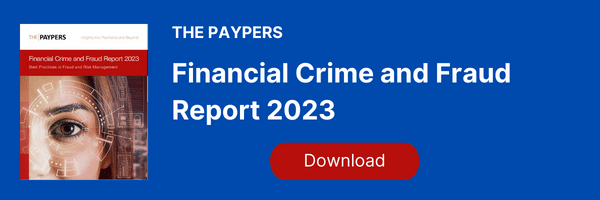Cyber Fraud: Real-Life Examples and Prevention Strategies
Cyber fraud is becoming a big problem worldwide. In Singapore, it's gotten worse. In 2022, there was a 25.2% increase in scams and cybercrimes, with 33,669 reported cases—up from 26,886 in 2021. Scams, in particular, accounted for the majority of the cases costing victims SG$660.7 million ($501.9 million), a 4.5% increase from SG$632 million in 2021, according to the Singapore Police Force.
In this article, we will discuss what is cyber fraud, its types, cyber fraud examples, and cyber fraud prevention strategies.
What Is Cyber Fraud and Its Impact?
Understanding Cyber Fraud
Cyber fraud is the dark side of the digital age, where cunning individuals employ technology to deceive and exploit others. This malicious practice targets not only individuals but also organizations and even governmental entities. The primary motives behind cyber fraud include financial gain and causing disruption. The techniques employed in cyber fraud are diverse and sophisticated, making them challenging to identify and thwart.
Impact of Cyber Fraud
One of the immediate and severe consequences of cyber fraud is financial loss. Individuals and organizations may find themselves drained of funds due to unauthorized transactions, fraudulent schemes, or ransom payments demanded by cybercriminals. These financial hits can be debilitating, affecting both personal livelihoods and the economic stability of businesses.
For businesses and individuals alike, the fallout from cyber fraud extends beyond immediate financial losses. A compromised online presence, leaked sensitive information, or being associated with a cyber-attack can severely damage one's reputation. Rebuilding trust with clients, customers, or the public can be a challenging and time-consuming process.
In the wake of a cyber fraud incident, legal consequences may follow. If sensitive information isn't protected, regulatory bodies can penalize you, especially if customer data is exposed. Those involved in cyber fraud may also face legal consequences, making the aftermath more complicated.
Types of Cyber Fraud
1. Phishing Attacks:
Phishing is a devious tactic wherein cybercriminals craft deceptive emails, messages, or websites that mimic trustworthy entities to extract sensitive information. These attacks often prey on human vulnerability, relying on individuals clicking on malicious links or providing confidential details, thinking they are interacting with a legitimate source. Spear phishing targets specific individuals or organizations, tailoring the deception for maximum impact, while vishing employs voice communication, adding another layer to this pervasive threat.
2. Ransomware Attacks:
Ransomware attacks are a menacing form of cyber fraud where malicious software infiltrates computer systems, encrypting files and demanding a ransom for their release. Victims are left with a difficult choice: pay the ransom to regain access to their data or risk losing it permanently. The WannaCry and NotPetya incidents show how cyber attacks can cause widespread chaos and financial losses. This highlights why having strong cybersecurity measures is so crucial.
3. Identity Theft:
Identity theft involves the illicit acquisition and misuse of personal information to impersonate individuals, often for financial gain or other criminal activities. Cybercriminals target Social Security numbers, bank account details, or login credentials to assume a victim's identity. The Equifax data breach in 2017 revealed how serious identity theft can be. It illustrated that one breach can jeopardize the private information of millions, putting individuals at various risks.
4. Online Shopping Scams:
Online shopping scams exploit the rising trend of e-commerce by creating fraudulent online stores or manipulating existing platforms. Scammers deceive consumers into purchasing non-existent or counterfeit products, leading to financial losses and disappointment for unsuspecting buyers. Counterfeit luxury goods, fake ticket sales, and fraudulent online marketplaces are common avenues for these scams, requiring consumers to exercise vigilance and verify the legitimacy of online sellers.
5. Business Email Compromise (BEC):
Business Email Compromise involves cybercriminals gaining access to business email accounts to orchestrate fraudulent activities. Commonly, attackers use compromised accounts to authorize unauthorized wire transfers or manipulate employees into conducting financial transactions. CEO fraud, a prevalent form of BEC, sees cybercriminals posing as high-ranking executives to trick employees into transferring funds, highlighting the vulnerability of organizations to such sophisticated attacks.
6. Credit Card Fraud:
Credit card fraud encompasses the illicit use of credit card information for unauthorized transactions. Stolen credit card details are often traded on the dark web, where fraudsters may use them to make online or in-person purchases. Techniques such as skimming devices at ATMs or point-of-sale terminals enable cybercriminals to capture card information, emphasizing the need for enhanced security measures to protect individuals and businesses from financial loss.
7. Social Engineering Attacks:
Social engineering attacks use psychological manipulation to trick individuals into revealing sensitive information or taking actions that jeopardize security. Impersonation, pretexting, and baiting are common tactics, exploiting human emotions such as trust or fear to achieve the attacker's objectives. The success of social engineering relies on exploiting the human element, making it imperative for individuals and organizations to enhance awareness and implement stringent cybersecurity practices.
Cyber Fraud Examples
1. WannaCry Ransomware Attack:
In May 2017, the WannaCry ransomware infected hundreds of thousands of computers globally. Exploiting a vulnerability in Microsoft Windows, the malware encrypted files and demanded ransom payments in Bitcoin. The attack affected hospitals, businesses, and government agencies, highlighting the widespread disruption that ransomware can cause.
2. Equifax Data Breach:
In 2017, Equifax, a credit reporting firm, faced a huge data breach. Personal information, including names, Social Security numbers, and birth dates of 147 million individuals, was compromised. The breach underscored the vulnerability of personal data and the severe consequences of identity theft.
3. Business Email Compromise (BEC) Scam on Toyota Boshoku Corporation:
In 2019, Toyota Boshoku Corporation, a subsidiary of Toyota, fell victim to a BEC scam. Cybercriminals impersonated a legitimate business partner and tricked the company into transferring approximately $37 million to fraudulent accounts. The incident highlighted the financial impact and sophistication of BEC attacks on large corporations.
4. SolarWinds Supply Chain Attack:
In late 2020, the SolarWinds supply chain attack compromised the software supply chain, impacting numerous organizations and government agencies. Cybercriminals inserted a malicious code into the software update of SolarWinds' Orion platform. This allowed them to gain unauthorized access to the networks of SolarWinds customers, leading to extensive data breaches.
Cyber Fraud Prevention Strategies
1. Stay Informed and Educated
Awareness is the first line of defense. Regularly update yourself on the latest cyber threats, tactics, and prevention measures. Understanding the evolving nature of cyber fraud enhances your ability to recognize and avoid potential risks.
2. Implement Strong Password Practices
Create complex, unique passwords for each online account and enable multi-factor authentication when available. This adds an extra level of security, making it tougher for cybercriminals to get unauthorized access.
3. Use Reliable Security Software
Invest in reputable antivirus and anti-malware software to protect your devices from malicious attacks. Keep these programs updated to ensure they can detect and neutralize emerging threats effectively.
4. Be Skeptical of Unsolicited Communications
Exercise caution when receiving unsolicited emails, messages, or calls, especially if they request sensitive information. Verify the legitimacy of the communication through official channels before responding.
Conclusion
The spectrum of cyber fraud is wide-reaching and continuously evolving, as demonstrated by real-life examples that span financial, and organizational domains. The prevalence of phishing attacks, ransomware incidents, and data breaches highlights the urgency for individuals and businesses to boost their digital defences.
Anti-Financial Crime Compliance with Tookitaki?






